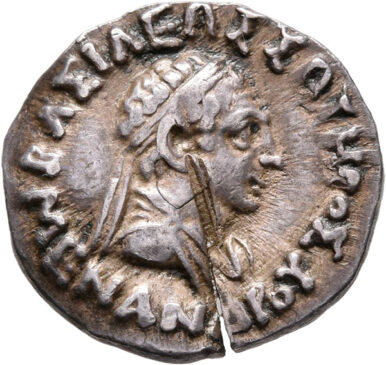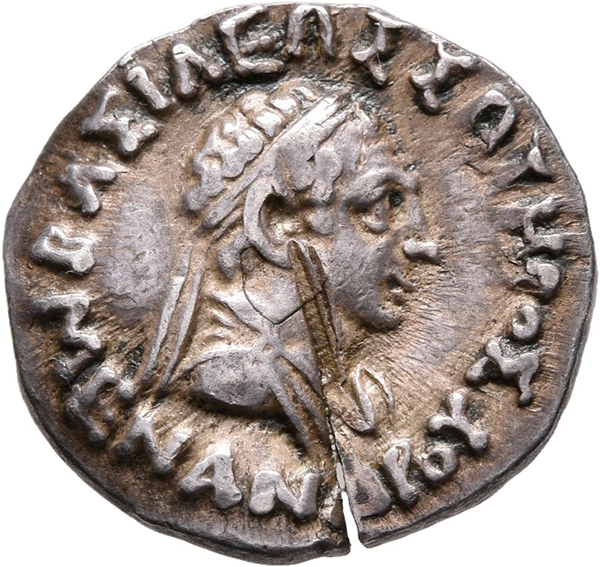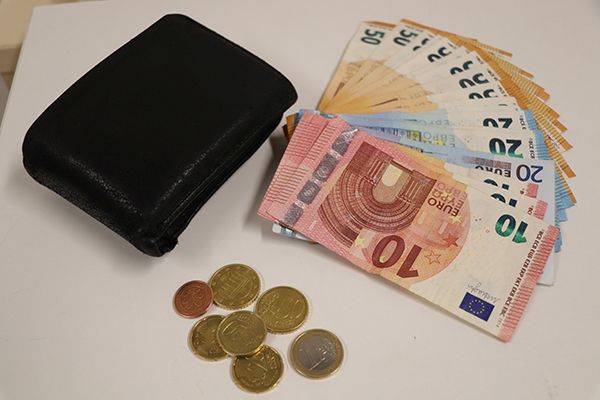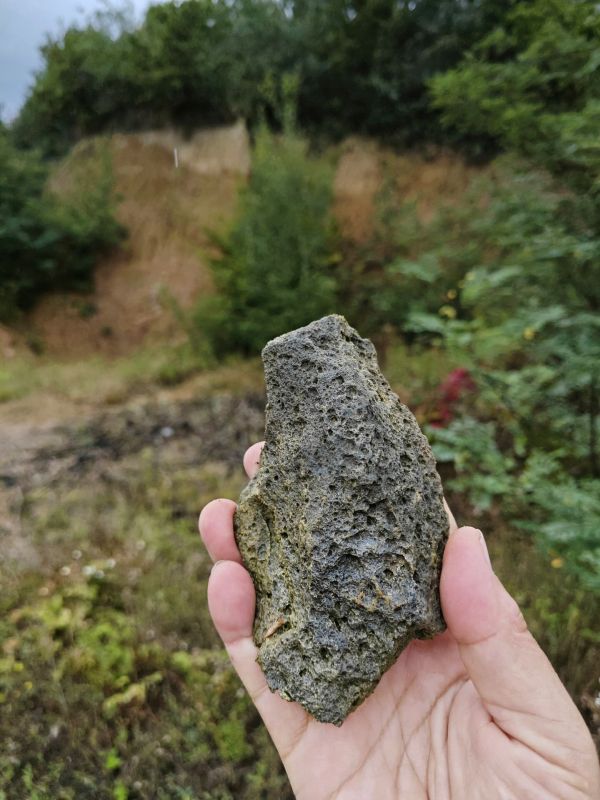By Stefan Krmnicek
In our series about antique coins, today we would like to present in more detail an antique coin of the Indo-Greek king Menander I. from the coin collection of the Institute for Classic Archeology at the University of Tübingen.
The coin is a so-called drachma, a coin of silver with a diameter of 17 mm and a weight of 2,41 g. On the obverse we see the draped bust of a man, shown in profile to the right, wearing a wide bandage in his hair, a so-called diadem. Two long ribbons hang down from the diadem to the back. A diadem was not merely a neat headdress but was considered the symbol of kings in the Hellenistic period (ca. 336-30 BC). The legend BAΣIΛEΩΣ ΣΩTHPOΣ MENANΔPOY is in ancient Greek and explains that this is a coinage of the “King and Savior Menander”. At first glance, one would immediately address the coin as an ancient Greek coinage: The king wears a diadem as a sign of his power, the legend names the ruler in Greek script, and the king has a Greek name. Despite its purely Greek appearance, however, the coin was not minted in the Mediterranean region, but 5,000 km further east, in the area between the Hindu Kush and the Indus Valley. Thus, the coin is a special source for the cultural history of the Hellenistic era in Central and South Asia.

A Greek kingdom had already existed on the territory of what is now northern Afghanistan since the late 3rd century BC. From the 2nd century BC, the sphere of power could be extended to the Indus Valley, until the Greek dominions finally perished towards the end of the 1st century BC in the storm of the equestrian and nomadic peoples of Central Asia. The coins represent a first-rate source genre for the study of the Hellenistic kings of this period, since the written and material sources on the event history of the region are very scarce. Some rulers are known only through their naming on the coins. References to the life of Menander I, depicted on our coin, are even found in the works of the Greek historians and geographers Strabon and Plutarch. Thus, we know that Menander I was an important Greek king who, around 160-130 B.C., conquered a large territory that extended south from the Hindu Kush to what is now northwestern India. Another interesting source for the reign of Menander I is the finding of one of his coins in the second oldest construction phase in a Buddhist sanctuary. The find proves that the Greek ruler obviously respected and promoted the local tradition and religion.
The reverse of our coin underlines this observation. We see the Greek goddess Athena standing with helmet to the left. In her raised right hand she holds a bundle of lightning, in her left she has raised her shield. Immediately, one would consider this depiction as a typical and not very unusual coin imagery of a Greek coin of the Hellenistic era. However, the legend on the reverse was not written in ancient Greek letters, but in Kharosthi, an ancient local script of eastern Afghanistan and northern Pakistan. The legend reproduces the wording of the obverse in Kharosthi, i.e. “King and Savior Menander”. The inclusion of both languages and writing systems – of the Greek Hellenistic elite and the local population – on the official medium of coinage shows how heterogeneous and multicultural the population was in Menander I’s domain. Such bilingual coins are unique in antiquity. However, they impressively demonstrate how money exerted an integrative force at the interface between different cultures.
Those who are more interested in such exciting stories can view ancient coins from Syria, Iraq and Afghanistan at the Museum Alte Kulturen of the University of Tübingen at Hohentübingen Castle. Even in times of Covid and closed museums or for all interested parties outside of Tübingen, the present coin can be admired virtually and free of charge in the Digital Coin Cabinet of the Institute of Classical Archaeology at https://www.ikmk.uni-tuebingen.de/object?id=ID1740.
tun21042701
Vorderseite einer Silbermünze des indo-griechischen Königs Menander I., Tüb. Inv. Slg. Hommel 2335 (Inv. neu). Foto: Stefan Krmnicek, Universität Tübingen.




